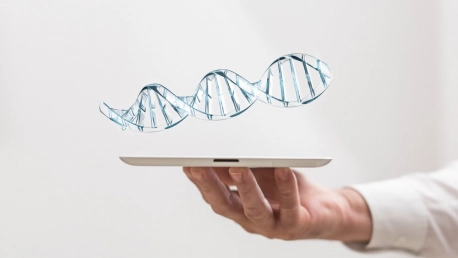In the last 50 years, our society has become increasingly digitized. One of the problems we face today is the vast amount of data we generate, coupled with the fact that the current ways of storing it are becoming insufficient and unsustainable. For decades, scientists believed that DNA could be the future of storage, mainly due to its high storage density. However, current limitations of DNA synthesis, the slow read and write times, as well as the possibility of data loss over time, mean that DNA digital storage is not going to the market soon.
Digitization Is Anything and Everything
The International Data Corporation estimates that the international data storage demand will grow to 175 Zettabytes by 2025—exceeding the storage capacity of any storage method currently available.
“One of the key drivers of growth in the core is the shift to the cloud from traditional data centers. As companies continue to pursue the cloud (both public and private) for data processing needs, cloud data centers are becoming the new enterprise data repository. In essence, the cloud is becoming the new core. In 2025 IDC predicts that 49% of the world’s stored data will reside in public cloud environments,” according to the IDC Seagate whitepaper.
The data centers we currently use have several disadvantages. First of all, they are very large. The biggest are the size of multiple football fields and have thousands of servers running 24 hours a day, 365 days a year. Secondly, they are extremely expensive. Trillions of dollars go into building and operating them. Last but not least, they consume a lot of electricity. The International Energy Agency estimated that data centers worldwide used 200-250 TWh of electricity in 2020.
Why Do Many Scientists Think DNA Digital Storage Is the Answer?
Many scientists believe that an alternative solution lies in DNA—the molecule that contains our genetic information—which has evolved to store massive amounts of information at a very high density. A coffee cup full of DNA could theoretically store all the world’s data says Mark Bathe, Professor of Biological Engineering at MIT. DNA allows information densities that are ten million times greater than traditional data. What’s more, DNA is stable at ordinary temperatures, with no power consumption.
“DNA is a thousandfold denser than even flash memory, and another property that’s interesting is that once you make the DNA polymer, it doesn’t consume any energy. You can write the DNA and then store it forever,” says Bathe.
According to a 2020 report from the National Academy of Technologies of France, to archive and retrieve data in DNA, five steps must be followed: 1) Encoding the binary data file using the four-letter DNA alphabet, 2) writing it, 3) storing it, 4) reading that DNA, and finally 5) decoding the information it contains. To store data in DNA, the 0 and 1 sequences used for digital data must be replaced by nucleotide sequences.
Advantages of Storing Information in DNA and Current Limitations
Researchers have identified several advantages of storing information in DNA—four of which are:
Information density. The information density of DNA is approximately 10 million times higher than that of traditional systems.
Low resource consumption. Storing DNA at room temperature does not consume any resources, and DNA operations consume less energy.
Longevity. DNA longevity is approximately 10 thousand times greater than traditional storage platforms.
Rapid replication. Copying DNA and the information it contains is fast and inexpensive because DNA is naturally replicated in cells before they divide.
However, storing DNA information requires accurate and large-scale DNA synthesis. Current approaches have the following limitations and challenges:
Difficulty in synthesizing long DNA fragments. It is difficult to synthesize a DNA fragment longer than 150 nucleotides. This limitation results from the error rate during DNA synthesis, which is typically 0.5% per nucleotide. Moreover, some DNA sequences are difficult to synthesize due to it repeating the same nucleotide several times in a row.
DNA synthesis is time-consuming. Current systems synthesize DNA by adding one nucleotide after another at a rate of 30 seconds per nucleotide. Archiving a file at this rate could take several months.
DNA synthesis is expensive and not particularly environmentally-friendly. Researchers estimate that today it would cost $1 trillion to write a petabyte of data (1 million gigabytes). Moreover, the chemical synthesis of DNA uses acetonitrile, a harmful chemical, making it a highly polluting process.
Conclusion
DNA looks very promising in solving both current problems and our emerging need for storing the large volumes of data we generate at staggering rates. This technology seems increasingly plausible as an option to store the world’s most valuable archives in collections of molecules the size of peanuts.









